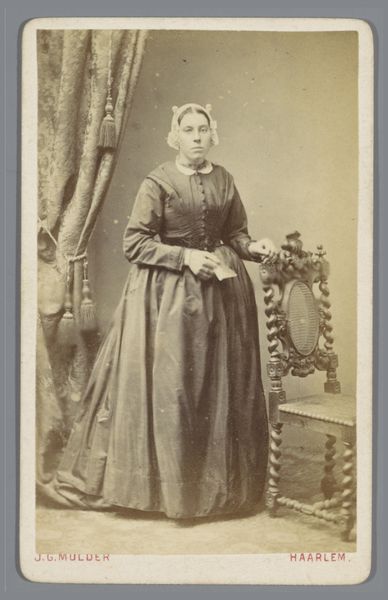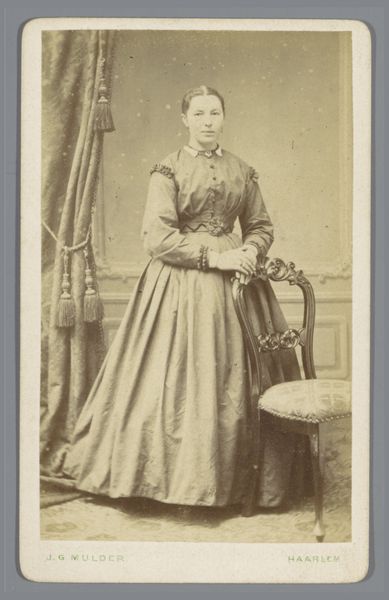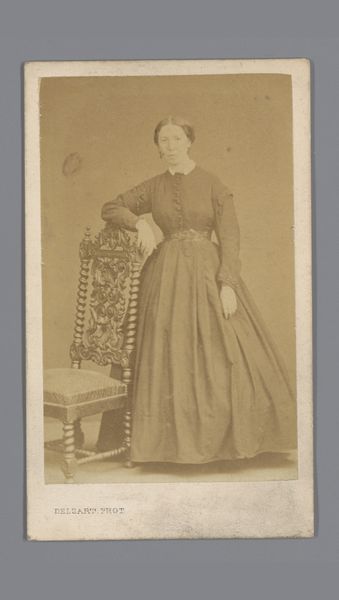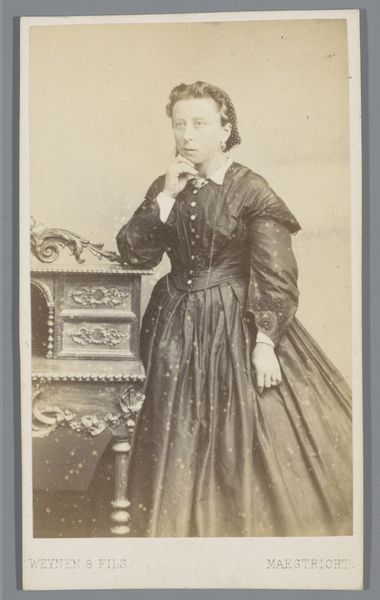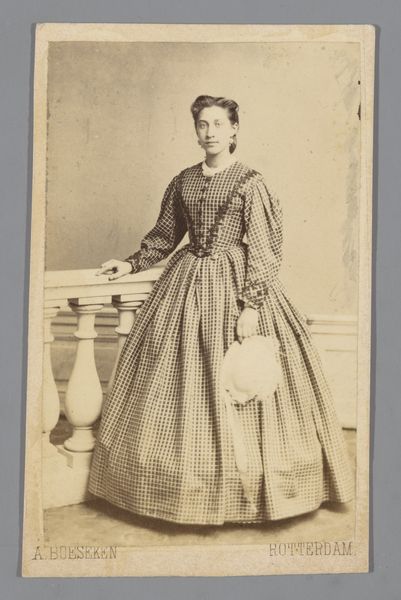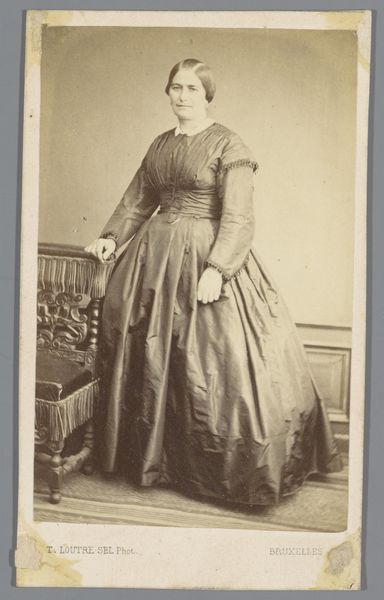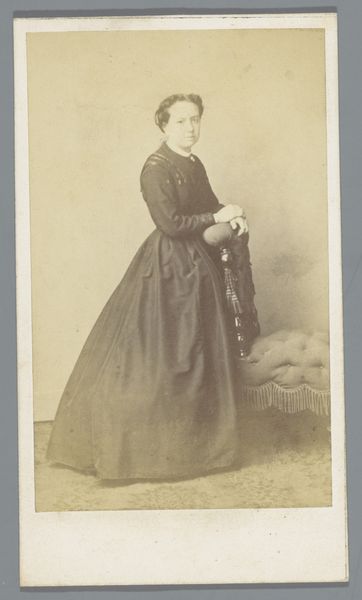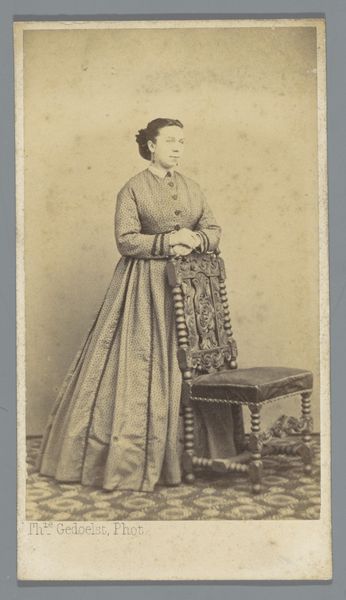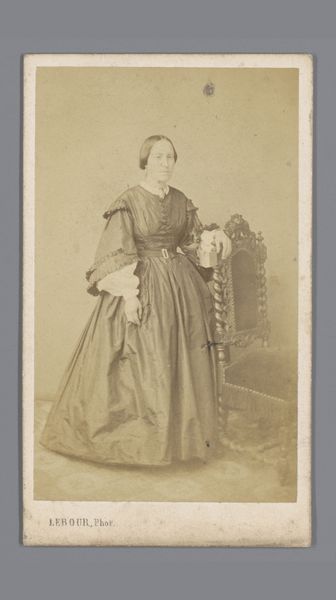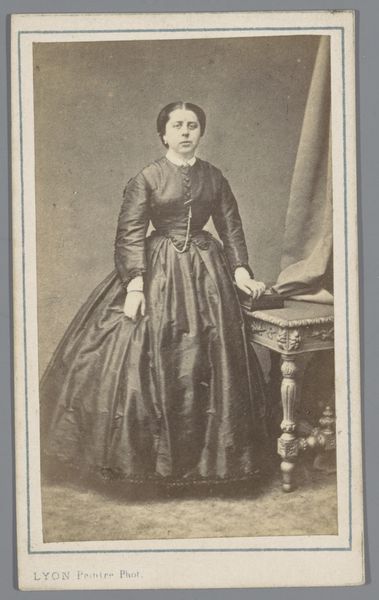
photography, gelatin-silver-print
#
portrait
#
faded colour hue
#
aged paper
#
pale palette
#
reduced colour palette
#
pastel soft colours
#
muted colour palette
#
white palette
#
feminine colour palette
#
photography
#
historical fashion
#
gelatin-silver-print
#
soft colour palette
#
realism
Dimensions: height 101 mm, width 62 mm
Copyright: Rijks Museum: Open Domain
Editor: So, here we have "Portrait of an Unknown Woman by a Chair," a gelatin-silver print from sometime between 1865 and 1887 by Jan George Mulder. The subdued color palette gives it a melancholic air. How do you interpret this work? Curator: This photograph offers a glimpse into the constructed identity of women in the late 19th century. Consider the sitter's pose, the deliberate arrangement of the chair, and the heavy drapery. What societal expectations might be at play here? Editor: I guess it feels staged, like she's performing a role. Is that typical for portraits of this time? Curator: Absolutely. Portraiture was often used to project a specific social standing. Notice the woman's dress—its details speak to both modesty and status. We must ask, whose gaze is being centered here? Is this image meant for public consumption, or for private familial viewing? The distinction matters. Editor: That's interesting. I hadn't thought about the intended audience shaping how she presented herself. Curator: Precisely. This image, like many others of the time, participated in shaping ideals of femininity and respectability, often excluding marginalized voices and reinforcing existing power structures. The photograph is not just an image; it’s a document reflecting a specific socio-political climate. Do you see anything else of interest? Editor: Now that you point it out, her neutral expression also seems like it might be playing into that, you know, the quiet, demure woman ideal. Curator: Yes, exactly. And while on the surface this seems like a simple portrait, thinking critically about its context opens up conversations about gender, class, and representation itself. Editor: I see what you mean. There's so much more going on beneath the surface than I initially realized! Curator: Indeed. Analyzing art through an intersectional lens reveals its inherent complexities.
Comments
No comments
Be the first to comment and join the conversation on the ultimate creative platform.
